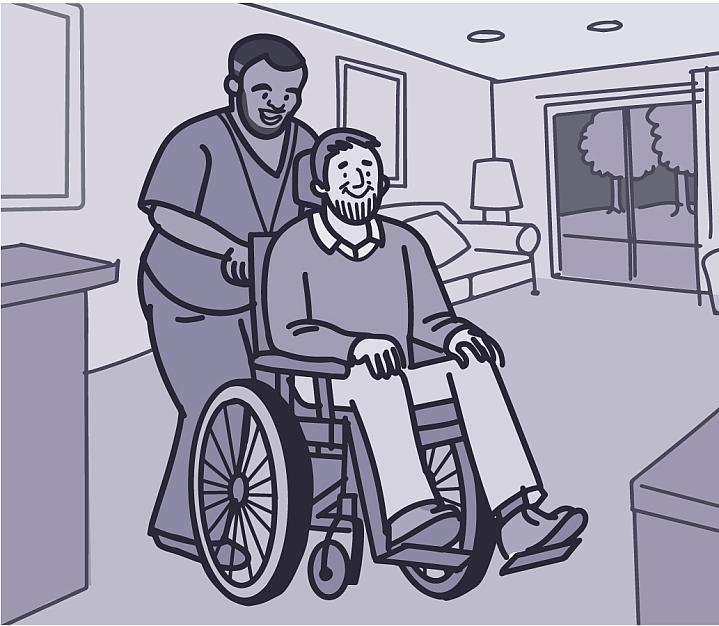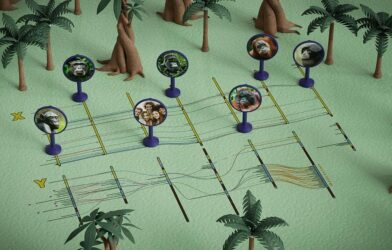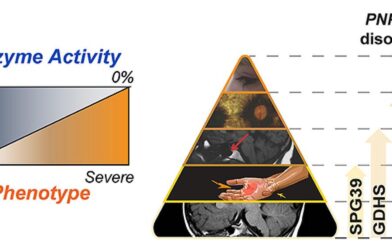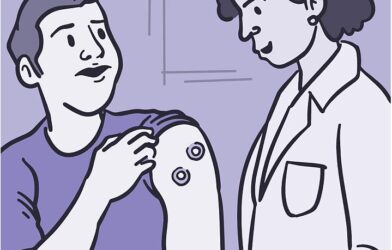Maryland, USA: Getting a diagnosis of amyotrophic lateral sclerosis (ALS) is devastating. ALS causes your muscles to weaken over time and eventually leads to death. It’s also called Lou Gehrig’s disease.
“ALS is a motor neuron disease,” says Dr. Rita Sattler, an ALS expert at the Barrow Neurological Institute. “Motor neurons connect to every muscle in your body and control muscle movement. So if these cells are no longer there, the muscles degenerate, strength disappears, and people become fully paralyzed.”
People with ALS usually die from respiratory failure. The muscles that control their breathing eventually shut down. The average lifespan of a person after they’re diagnosed is three to five years.
Over the past decade, researchers have uncovered more molecular clues about how ALS develops. They’re hoping this will eventually help identify people with ALS sooner. Scientists are also looking for ways to better track and treat the disease.
Uncovering Causes
Most cases of ALS are sporadic. That means there’s no known cause. But it can also run in families. Genetic causes account for about 15% or less of ALS cases.
“The first genetic cause of ALS was discovered nearly 30 years ago, with a gene called SOD1,” says Dr. Michael Ward, an NIH neurologist and genetics researcher. “Now, there are over 50 different genes that the research community has identified that can independently cause familial forms of ALS.”
Gene mutations, or changes, can cause problems in the function of the proteins made from those genes. Most of the gene mutations found in ALS lead to the dysfunction of a protein called TDP-43. TDP-43 is important for turning your DNA, which holds your body’s genetic blueprint, into RNA. RNA is the molecule that tells your cells how to make proteins.
To work properly, TDP-43 must be in the part of the cell that houses your DNA, called the nucleus. In ALS, TDP-43 leaks out and clumps together outside of the nucleus.
“So, we have two bad things happening at the same time,” Sattler explains. “We have these proteins lacking in the nucleus, and they don’t do what they’re supposed to be doing in the nucleus. At the same time, we have them clumping outside the nucleus and adding even more problems to the degeneration that is already happening.”
Both Sattler’s and Ward’s teams are studying how this protein moves in and out of the nucleus. Other NIH-funded researchers are looking for more cellular defects common to people with ALS. A better understanding of these molecular pathways may help lead to earlier detection and treatment for the disease.
Detecting ALS Early
Right now, getting an ALS diagnosis takes time. “In many people, it can take up to 18 months to get a final diagnosis,” says Dr. Jordan Green, a speech-language pathologist at the MGH Institute of Health Professions. “Early diagnosis is particularly important in a disease like ALS because the motor neurons are dying, and you want to intervene as early as possible.”
If you show signs of ALS, your health care provider will perform a physical exam and review your medical history. They may also run tests to rule out other conditions.
“But, there is no blood test that we can run that says yes, you have ALS,” says Sattler. A neurologist can assess your muscle strength, reflexes, and other functions. These tests are used to give a “functional score.” The score helps clinicians monitor the severity and progression of the disease.
One function ALS often changes is your speech. You may start speaking more slowly and have longer pauses between words. Green’s team is developing computer-based tools to detect these changes—even before you can perceive them yourself.
One technology his team is testing is a phone app. They’re comparing how well data from the app detects changes in speech compared with a clinician’s assessment. The app tracks how fast someone talks, their tone, and other components of speech. The technology may one day be able to help predict how fast a person’s speech will decline, too.
There are also speech-generating technologies that can help a person with ALS communicate as the disease progresses. “But it’s really important to see a speech pathologist very early on in the disease,” says Green. “That way, they can learn to use these devices before they lose the ability to talk.”
Green is also working on ways to train software for people who are already experiencing speech decline. Eventually, people with ALS may completely lose their ability to talk. So, other scientists are developing brain-computer interfaces that use brain activity to help interpret what a person who can no longer speak wishes to say.
Tracking and Treating ALS
Scientists are seeking ways to track and slow the progression of ALS, too. Current drugs can treat a person’s symptoms but can’t stop the disease from getting worse.
Finding biomarkers—molecules or other signs of a disease—that can be used to track the progression of a disease has become a key research focus. Biomarkers can be used to see whether potential new drugs are working. NIH-funded researchers are looking at many different possibilities.
Green notes that speech detection technologies might be used as a marker to test drugs. Another possibility is the TDP-43 protein. Ward’s team is testing ways to measure when TDP-43 becomes dysfunctional in cells but before it has done damage. That would allow them to see if treatments can prevent or slow the protein from doing damage.
Another potential biomarker researchers have been investigating is called neurofilament light chain. It’s a molecule that’s released when nerve cells die. A new drug is under U.S. Food and Drug Administration review for treating ALS based on its effects on this molecule. The drug is called tofersen. It targets mutated SOD1 genes. However, it’s still unclear whether the drug’s effects on the biomarker will translate into an impact on the disease.
“This is a very, very challenging disease to develop effective therapies against,” says Ward. “But we have never been in a better position from a research standpoint to begin to understand what causes ALS and how to reverse that.”
Wise Choices
Early ALS Symptoms
- Muscle twitches in the arm, leg, shoulder, or tongue.
- Muscle cramps.
- Tight and stiff muscles, called spasticity.
- Muscle weakness affecting an arm, a leg, the neck, or diaphragm.
- lurred and nasal speech.
- Difficulty chewing or swallowing.
-NIH news













